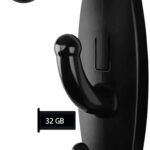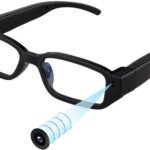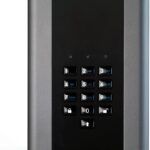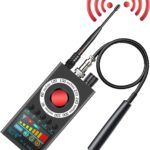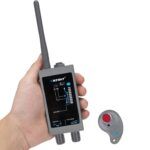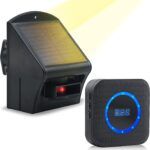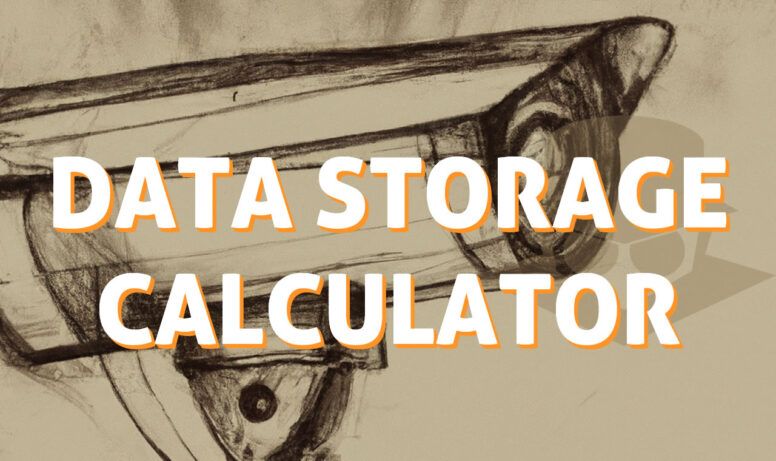Our data storage calculator will give you an estimate on how much storage space your camera needs depending on factors such as resolution, frame rate, and compression method.
Keep in mind our calculator only provides a general average estimate of storage space usage. Exact file sizes can vary depending on each camera model, amount of movement in videos, specific compression settings, night vision, and other factors.
This video storage estimator takes into account five most impactful factors to determine approximate file sizes per minute, hour, or day of video footage. We are proud to say we built the most accurate file size estimator for surveillance cameras.
How to use this tool
Most camera reviews on our store include information on video resolution, and compression method or format. This information is enough to get a rough estimate on how much data is required per minute of video footage. A more thorough explanation of all factors is below.
1. Resolution
You can take a look at our Video Resolutions page to learn more about different recording resolutions. Most common resolution is 1080p, with some higher-end cameras supporting 2K or 4K. Most cameras also support downscaling resolution, meaning a 4K resolution camera will be able to record in 4K but also 2K, 1080p and 720p.
2. Compression
Compression algorithm or file format can also have a major impact on file sizes. Our tool features five most common compression methods: H.264, H.265, MPEG-4, and MJPEG. All of these produce different file sizes.
3. Frame Rate
Security cameras will record in 30 FPS (Frames per Second) in almost all cases. Typically only high-end surveillance cameras or specialized products such as Action Cameras are able to record video with higher frames per second. More frames per second means smoother footage when video is viewed in slow motion. In most cases high FPS is not a feature that hidden camera users often require.
For comparison, most TV shows and movies you watch are in 30 FPS. If in doubt, you should leave FPS on the default value of 30 for a more accurate calculation.
4. Video quality
Many cameras on the market have pre-set video quality settings. In most cases this changes the bitrate. Most cheap surveillance cameras will have bitrate set to Low or Medium, giving you adequate but not perfect picture quality. Some cameras may not allow you to change this setting, in which case it’s typically Medium quality.
5. Amount of motion
Surveillance cameras capture and record video data continuously, and the file size of each recorded frame depends on the level of motion within the scene. When there is minimal motion or static scenes, such as an empty room or a fixed camera angle, the resulting video files tend to be smaller. In contrast, areas with high activity, frequent movement, or rapid changes in the scene, like crowded streets or busy environments, generate larger video files due to the increased amount of visual data that needs to be recorded and stored.
You should set motion amount to High in our tool in case your camera uses motion detection and only records footage when there is movement. Otherwise, set it to Low or Medium depending on how much motion or activity you expect your camera to record.
Things to consider
Two most important factors to consider about purchasing a camera regarding storage capacity is battery life, and amount of available storage space on an SD card or external device.
Most small hidden cameras will have limited battery life. If your camera battery lasts for 2 hours while actively recording, it may not always make sense to have storage capacity which exceeds 2 hours.
For cameras which are plugged in an outlet for 24/7 surveillance you will often want as much storage space as possible. But, more storage also means greater expenses, as high capacity SD cards can be costly.
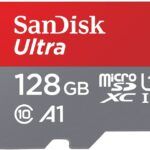
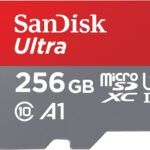
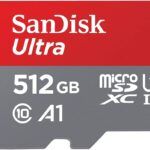
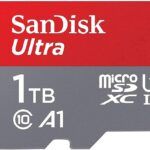
SD Card Capacity can go over 1TB, which can be sufficient to store days of video footage (depending on resolution and compression).
It’s also good to remember useful camera features such as Motion Detection and Loop Recording:
- Motion detection will only activate recording once your camera detects movement.
- Loop recording on the other hand will repeatedly delete oldest video footage once your storage device is full to make room for new videos.
With these two features you can significantly reduce storage space and costs involved.
Video data storage FAQs
- How much storage space does my camera need?
Hidden camera data storage required is different for each product. There are different resolutions and video compression formats which can significantly impact the duration of footage you can record. Furthermore you should take camera battery life into the equation as well. On a portable hidden camera with less than 2 hour battery life, it may not always make sense to have an SD card that stores more than 2 hours of video footage.
Check your camera specifications to learn which compression method it uses, then use our Video storage calculator tool to estimate how much disk space you require for your particular needs.
- What are most common compression formats used for surveillance cameras?
- H.264: This is the most commonly used compression format for surveillance cameras due to its efficiency in compressing video while maintaining good image quality.
- H.265: Also known as HEVC (High-Efficiency Video Coding), this compression format is a newer version of H.264 and provides better compression while maintaining high-quality video.
- MJPEG: This compression format stands for Motion JPEG and is used primarily for high-resolution video surveillance cameras. It compresses each frame of the video individually, which results in large file sizes.
- MPEG-4: This compression format is also used in spy cameras and offers a good balance between file size and image quality.
- Can you record footage on a PC or phone remotely?
If your camera supports WiFi streaming to a remote device you can simply set up recording software on your PC, tablet or phone to record all streamed footage. Most cameras don’t come with dedicated software for this, but there are plenty of free programs and apps which will allow you to record on-screen footage.
An added benefit of recording on a computer is increased processing power, allowing you to use more advanced compression algorithms and save storage space.
- What is the difference between lossless and lossy compression?
Compression is a technique that reduces the size of a digital file by eliminating redundant or unnecessary information. Two types of compression are commonly used: lossless and lossy.
Lossless compression is a type of data compression that allows the original data to be reconstructed perfectly from the compressed data. In other words, no data is lost during compression, and the file size is reduced without affecting the quality of the original data. Lossless compression is often used for text, data, and graphics files.
On the other hand, lossy compression is a type of data compression that reduces the size of a file by permanently eliminating some of the data. The amount of data eliminated is based on algorithms that remove the least essential data first. As a result, the quality of the data is affected, and it cannot be reconstructed to the original quality. Lossy compression is often used for multimedia files such as images, audio, and video files, where small losses in quality are acceptable in exchange for smaller file sizes.
- What is the best compression codec for storing video footage?
There is no single “best” compression codec for storing video footage, as the ideal codec depends on a variety of factors including the intended use of the footage, the available storage space, and the desired balance between file size and image quality. Some commonly used codecs for video compression include H.264, H.265, and MPEG-4, all of which use lossy compression to achieve smaller file sizes at the expense of some image quality.
As such, the best compression codec for storing video footage depends on various factors, such as the desired video quality, available storage space, and playback requirements.
H.264 is a widely used codec that offers good video quality with efficient compression. It is suitable for most applications and is supported by most modern devices and software. H.265 is a newer codec that offers improved compression and better video quality than H.264, but it requires more processing power to encode and decode. MPEG-4 is another popular codec that provides good compression and quality for streaming applications.
- What is the impact of resolution on storage space requirements?
The impact of resolution on storage space requirements is significant. Higher resolution videos, such as 4K or 8K, require more storage space compared to lower resolution videos, such as 720p or 1080p. This is because higher resolution videos have more pixels, which means more information needs to be stored. For example, a 1080p video has 2.25 times fewer pixels compared to a 4K video, and thus requires 2.25 times less storage space. For a more accurate assessment use our Storage calculator and Resolutions calculator tools.
It’s important to consider the storage requirements when choosing the resolution of your video footage. Higher resolution videos may provide better image quality, but they also require more storage space, which can become expensive and impractical in certain situations. It’s recommended to balance the desired resolution with the available storage capacity and cost considerations.
- What is the difference between H.264 and H.265 compression?
H.264 and H.265, also known as MPEG-4 AVC and HEVC (High-Efficiency Video Coding), respectively, are two popular video compression standards used to reduce the file size of videos. H.265 is the successor to H.264 and is designed to provide better video quality at lower bit rates compared to its predecessor. This is accomplished by using more advanced compression techniques, such as larger block sizes, better motion compensation, and improved prediction algorithms.
One of the main benefits of H.265 over H.264 is that it requires less storage space while maintaining the same level of video quality. This is particularly useful for high-resolution videos, as they require more storage space due to their larger file sizes. However, H.265 requires more processing power to encode and decode videos, which can be a limitation for small hidden cameras. Ultimately, the choice between H.264 and H.265 compression will depend on the specific requirements of the project, such as available storage space, desired video quality, and available hardware resources.
- How does the bitrate affect storage space requirements?
The bitrate of a video refers to the amount of data being processed per second. It determines the level of detail and quality of the video, as well as the resulting storage space requirements. The higher the bitrate, the more data will be stored per second of video, resulting in higher quality video but also requiring more storage space.
When dealing with storage space limitations, it is often necessary to balance the desired quality of the video with the available storage space. Reducing the bitrate can reduce storage space requirements, but at the cost of video quality. On the other hand, increasing the bitrate will result in higher quality video, but at the expense of greater storage space requirements. It is important to find the optimal balance between the two factors to ensure that the video quality is satisfactory while still being able to store a reasonable amount of footage.
- What is the difference between compression format and compression codec?
Compression format and compression codec are related concepts, but they are not the same thing. The compression format refers to the general method of compressing data, while the compression codec is the specific software algorithm that is used to implement that method.
For example, the MP4 format is a compression format that uses a variety of codecs to compress video and audio data. Codecs like H.264 and H.265 are specific algorithms that are used within the MP4 format to compress video data. Different codecs within the same format can have different levels of compression and performance, so choosing the right codec can have a significant impact on the resulting file size and quality.
- How do Frames per Second affect surveillance camera data storage?
Frames per second (FPS) refers to the number of images that a surveillance camera captures every second. The higher the FPS, the more detailed and smoother the video will appear, but this also increases the amount of data that needs to be stored. The higher the FPS, the more storage space is required to store the footage. For example, if a camera is set to record at 30 FPS, it will produce twice the amount of data than if it was set to record at 15 FPS.
However, the optimal FPS for a surveillance camera depends on the specific application and the level of detail required. In areas with high traffic, it may be necessary to capture footage at a higher FPS to ensure that every detail is captured, while in low traffic areas, lower FPS may be sufficient to capture the necessary information without overloading the storage capacity.
- What other factors affect video footage file size?
The storage calculator tool we provide can merely estimate the amount of storage space your camera will require. Besides resolution, frame rate and compression, here are other factors that affect video file size for security camera footage:
- Bitrate: Higher bitrates result in larger file sizes.
- Length of Recording: Longer recordings take up more space.
- Motion Detection: Motion detection can reduce the amount of footage captured, reducing the overall file size.
- Day/Night Mode: Night vision mode can result in larger file sizes due to the need for infrared lighting.
- Number of Cameras: The more cameras that are recording, the larger the storage space required.
- Audio Recording: Recording sound can increase the file size.
- Compression Format: Different compression formats have varying file sizes.
- Camera Type: Different camera types can have different file sizes, depending on their features and capabilities.
- Environmental Factors: Factors such as weather, lighting conditions, and background movement can affect the amount of data captured and therefore the file size.
Embed our video storage estimator
Our video storage estimator tool can be freely embedded on other websites using this code:
<iframe src="https://spycamcentral.com/tool/storage-calculator.htm" loading="lazy" frameborder="0" width="100%"></iframe>See our Tools page for more information on how to use this embed code.
Don’t forget to take a look at our Resolutions Calculator and Lens Angle Preview tools as well. These can help you determine video and photo resolutions of your camera, or get a preview of your camera’s field of view to see if it’s suitable for your surveillance purposes.
Data storage is one of the most important factors to consider with surveillance cameras. You never want to run out of storage and potentially lose important video footage. This is why you should always choose the best data storage option and capacity for your specific use.
We hope our calculator is a useful tool to help you find the perfect camera for your individual needs.







